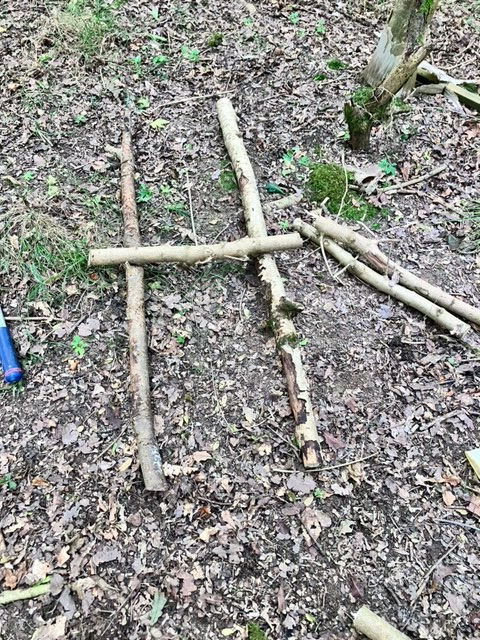Explain the sustainability of current and historic woodland management techniques in own location
- Naomi Harvey

- Jun 24, 2024
- 4 min read
Historical Woodland Management Techniques.
One of the main historical techniques to woodland management is coppicing. This involves periodically cutting down trees to their stumps to allow new shoots to regrow. This has been carried out in our area and Dorset for centuries. I have recently visited our forest school site and have found that the trust has started to coppice (photos below). This will help with biodiversity with the potential to restore ecosystems and increase species diversity.
Coppicing helps sustainability by promoting a diverse understory and variety of habitat, it reduces soil erosion and helps maintain nutrient cycles.
Another benefit to coppicing is that it can provide sustainable wood resources for local communities.

Another technique although historic, has been used in our area is wood-pasture system, which consists of combining forestry and grazing, where livestock graze in the wooded areas, preventing overgrowth. In our particular area, the local farmers still use cows to graze the surrounding field and hedgerows, to maintain and prevent overgrowth.
The wood-pasture system helps sustainability by supporting diverse habitats for both woodland and pasture species, also grazing can compact soil but with careful management reduces this.
Another historic technique carried out was charcoal production, this would include controlled burning of wood in kilns. For sustainability this could be a negative technique, if not managed correctly it could lead to habitat loss. This could also deplete the health of the soil by overharvesting. Historically it would have community benefits for providing fuel and jobs.
Current Woodland Management Techniques.
Selective logging is a current woodland management used in our forest school space. This involves harvesting specific trees while preserving the overall structure of the forest. The sustainability of selective logging is positive as it maintains habitat structure and diversity, it is also less disruptive than clear-cutting helping to preserve soil integrity. Community benefits of this technique is having sustainable timber resources.

Photo from our setting.
Continuous cover forestry (CCF) is another technique currently used, this maintains a forest canopy at all times by selectively harvesting trees and allowing natural regeneration. This can promote diverse age structure and species. It minimises soil disturbance and offers long-term wood resources.
Agroforestry combines forestry and agricultural practices such as integrating tree planting on farms. Agroforestry improves soil fertility and reduces erosion, all the while increasing carbon storage by keeping trees on the farmland.
Finally rewilding is the most natural management technique, allowing natural processes to restore and manage woodlands whilst reducing human intervention. Natural processes improve soil structure and nutrient cycling. The impact on the biodiversity could have high potential for restoring ecosystems and increasing the diversity of species in the area.
Puddletown Forest
As well as looking at my own forest school space, I also looked into a forest close by, Puddletown Forest, this is a historical and important ecological space, it is home to rare insects, ground nesting birds such as woodlark and native reptiles in particular sand lizards and smooth snakes.
Puddletown forest is dominated with acidic soils and consists of Douglas Fir, Corsican Pine and Scots Pine. They have been creating open space as a result of felling for heathland restoration.

I have found the above management map, which gives us an insight of what a woodlands needs to plan and organise to keep the habitat and forest thriving. As you may be able to see, they plan a lot of felling in areas, this will be for multiple reasons, to allow new growth of trees, new species, flora and fauna to use the space. They also have to manage the water maintenance, for example removing trees/shrubs to restore the hydrological system using drain blocking and raising the bed level where required. They also have another plan which shows the 'restocking' of the woodlands. This shows the trees that they will be replanting, for example firs, pines also showing natural regeneration of broadleaved, conifer and mixed woodland.
Restock maps indicate the likely dominant species type within a small area of the forest within a compartment that is harvested in a single operation, also known as a coupe. In reality, coupes may contain a mixture of different species / components. In order to adapt to climate change and provide a degree of protection against disease, coupes will be restocked with a suitable species mix suited to local site conditions.

Conclusion
In our own forest school area the trust that looks after our space uses selective logging and agroforestry to help enhance our space and create a broader range of flora and fauna. The main reason behind habitat management in woodlands is to help diversify the structure.
The aim is also to create a large diversity in even age trees by felling groups or lines of trees, it may also involve planting or seeding and produce regeneration and to encourage new growth.
From my research, I have concluded that many forests locally allow the space to regenerate naturally and try not to intervene too much in the change of the natural space. The majority of the time when these spaces are intervened with, it is due to health and safety reasons. I believe there are positive's and negatives for the natural development of woodlands, for example it allows some species to expand and the longevity of trees, also allowing the natural spaces to regenerate with wildlife. However, it can have a negative impact, with some species unable to survive without humans using the coppice system to help the habitat, ,they are able to survive and some have now disappeared on a local scale.
References:

Comments